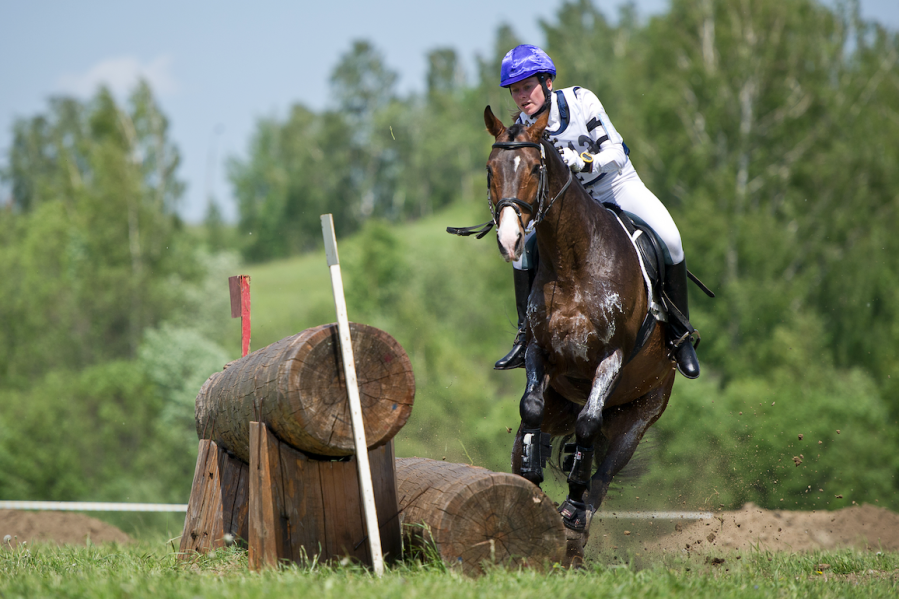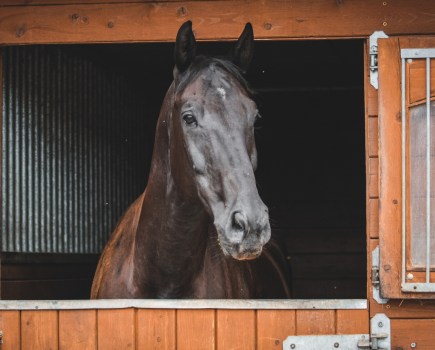Equine vet Kieran O’Brien kicks off his new vet diary with a day at a local hunter trial, where he treats a horse’s injured hind leg, advises on a superficial tendon injury and jumps into action when he witnesses a terrifying rotational fall.
I am on duty at a local hunter trial, parked near to the start. The competition is approaching its end. It’s been a fairly quiet day for me — so far. Arriving early, I collect a radio and drive around the cross-country course to familiarise myself with the layout and the access points. I find an important gate is locked and over the radio I am assured by the organiser that it will shortly be unlocked.
I attend the fence judges’ briefing to ensure they know where I will be located, and what to do if a horse is injured. I explain that in the great majority of cases an injured horse can slowly be walked back to the lorry park where I can attend to it, and only in exceptional cases will I need to go to a fence. I check all the fence judges are equipped with radios and they know how to use them.
Then, fortified by a cup of coffee and a bacon roll from the refreshment van, I drive to my location on the course, where I will remain for most of the day unless summoned elsewhere. From where I am parked, I can see the first three fences and the last four. Following a brief radio check with the course controller to ensure I can quickly be communicated with, I settle down to watch the action as the first horse leaves the start box.
‘He hit the last fence hard’
As it’s a hunter trial organised by the local hunt and not an affiliated event, the construction of the fences is quite traditional and rudimentary. The are no ‘frangible pins’ or ‘mims pins’ which ensure a rail will collapse following an impact from a horse — or rider. There is no optimum time, and I expect some riders will go quite fast.
As the morning progresses the overcast sky starts to clear, revealing a low sun. At around midday a call comes over the radio: “Please go to the lorry park, horse injured, red horsebox at the far end”. I drive to the lorry park and find waiting for me a teenage rider in her cross-country gear, standing next to her sweating and panting horse, which is being held by her mother.
“He hit the last fence quite hard. I’m just worried he might be hurt,” she says. I see a small superficial scrape on the surface of hind cannon, fortunately for me not concealed by grease. I ask for the horse to be trotted, away and back. He is sound. I reassure the rider that the injury is mild, although there might be quite a bit of swelling overnight. Although all we can see is a graze, there is very likely to be significant bruising underneath, concealed by the horse’s pigmented skin and hair. I explain how best to manage this, and then I return to my position on the edge of the course.
‘Tissue overlying the tendon is exposed’
As the morning drifts into the afternoon, halfway through eating a packed lunch provided by the organiser I get another call to go to the lorry park. It’s another leg injury, in a big chestnut warmblood-type. I see some blood in the mid cannon-region of a foreleg. This horse has overreached and sliced right through the back of one of its neoprene tendon boots. There is a small skin wound at the back, overlying the tendons.
Although the whitish tissue overlying the most superficial tendon is exposed, as far as I can see it has not been breached. Importantly, the wound is just above the upper part of the tendon sheath (which extends from below the fetlock up into the tendon region), so it has not penetrated the sheath. I clip a small amount of hair from around the wound, irrigate it with saline, and then apply a sterile dressing followed by padding and bandaging.
I administer an antibiotic and instruct the owner on the aftercare, mentioning that although it appears at first sight the horse has been lucky, it might be necessary for her own vet to scan the tendon at a later stage to confirm it is healthy. I also explain that the thin layer of neoprene at the back of most brushing boots provides little or no protection to the tendons if they are struck from behind, and she should consider obtaining boots that do provide protection.
Spotting my car while I am in the lorry park, another rider approaches me. Would I mind removing a hind shoe from a horse that has lost the opposite one? I am happy to oblige.
A rotational fall
Resuming my position on the edge of the course, I watch the horses in the final class at the start and finish. Then I hear an announcement over the loudspeaker: “…and the last horse today has just started on the course”. I watch this horse, a big lumbering dark bay, jump the first few fences as it heads out into the country. Anticipating departing for home soon, I check everything in my car is back in its place while I wait for the horse to return.
Soon the horse reappears and approaches the third last fence, which is a big spread. He is still very forward going, clearly a very fit horse. Close to the fence the rider urges him forward with her voice, legs and seat. But at the last minute he half-stops and hits the front of the fence hard with his forearms.
And then I see the most frightening event in cross-country events — a rotational fall. The horse somersaults, landing on his back with the poor rider underneath. The horse quickly rolls on his side and stands. The rider lies there, moaning and hardly moving. The paramedic, positioned close to me, immediately drives his ambulance car to the fence. I run there too. The fence judge holds the horse, who is visibly panting and moving around. I briefly inspect him. There are some inconsequential marks on his forearms but otherwise he seems normal.
The rider’s connections run to the fence and take charge of the horse. One of them starts to walk him away, back towards the lorry park. I follow them. On the way I ask her to give the horse a short trot and he is sound. We briefly look back at the poor rider now being attended by two ambulance staff. My assistant with the horse is visibly in tears as she knows how severe the injuries to a rider can be in a rotational fall. I can offer no words of comfort. I am thankful my job today as an equine vet is done.
Main photo (stock image) by Shutterstock










